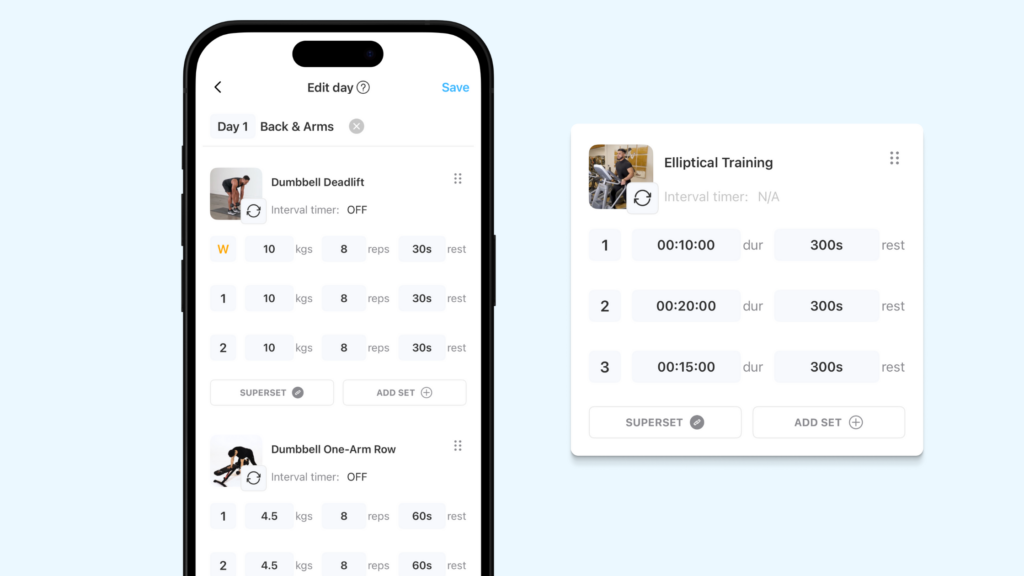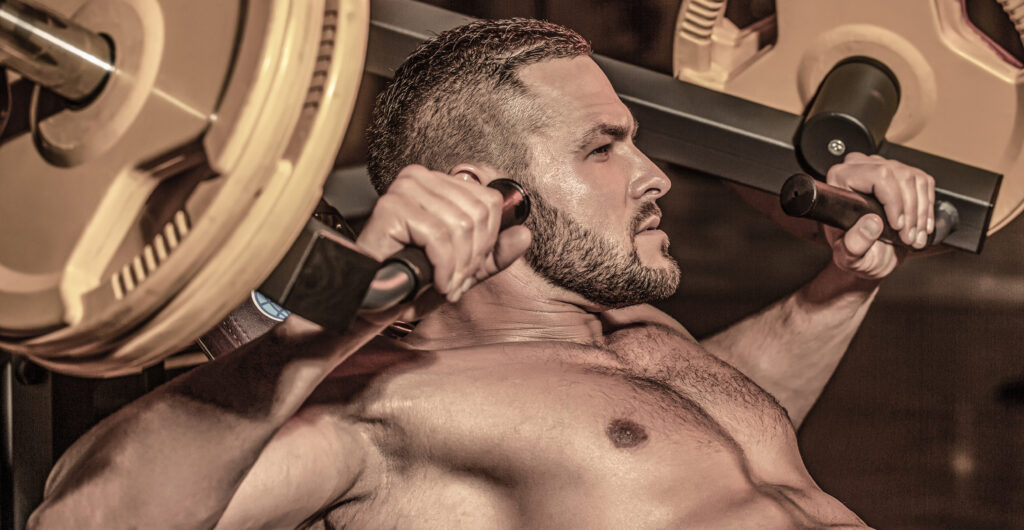When it comes to building muscle and strength, gym-goers often face one major question: Should I lift heavy weights or light weights? Both strategies have their champions, and both can be effective—depending on your goals, training experience, and how you execute your workouts. Here’s what the latest science says and how to use the Jefit app to optimize whichever strategy you choose.
Heavy Weights for Strength
If your primary goal is increasing strength, then lifting heavier weights with fewer repetitions is your best approach. Heavy weights—typically 75-90 percent of your one-rep max (1RM)—activate high-threshold motor units, which are essential for maximal strength development. Research has shown that low-rep, high-load training is superior for improving maximal strength.
A 2016 study in the Journal of Applied Physiology found that participants who trained at 80–90 percent of their 1RM gained significantly more strength than those training at lower intensities, even when total volume was equalized (Morton et al., 2016).
Jefit Tip: Track your sets, reps, and weight lifted to monitor weekly progress. Use the app’s 1RM calculator to fine-tune load selection.
Light Weights for Hypertrophy—But Only to Failure
When the goal is muscle size (hypertrophy), both heavy and light weights can be effective—as long as you train to or near muscular failure. This means pushing your muscles until they can’t perform another rep with good form. A study published in The Journal of Strength and Conditioning Research found that lifting light weights (30% of 1RM) to failure produced similar hypertrophy as lifting heavy weights (80 percent of 1RM) to failure.
The key is effort, not necessarily load. When you take a light weight to failure, you recruit nearly all your motor units, including the fast-twitch fibers responsible for growth.
Jefit Tip: Use the “notes” section in your workouts to log when you hit failure on a set. This helps monitor intensity across training cycles.
What’s Better for Beginners?
For those just starting out, it may be best to incorporate both. Lifting light weights helps perfect form and reduce injury risk, while moderate to heavy weights build foundational strength. The American College of Sports Medicine recommends starting with 8–12 reps at 60–70 percent of 1RM for beginners, gradually increasing intensity over time.
Jefit Tip: Beginners can use Jefit’s custom programs to alternate light and heavy sessions throughout the week for balanced development.
Which Builds Muscle and Strength Faster?
If speed is the priority, heavy weights typically build strength faster, especially when combined with compound lifts like squats, deadlifts, and bench presses. For hypertrophy, both methods work, but heavy weights may offer an edge by also enhancing neuromuscular efficiency and mechanical tension—two key drivers of muscle growth.
A 2021 review in Sports Medicine concluded that training with loads above 60 percent of 1RM is optimal for maximizing strength and hypertrophy in trained individuals. Light weight training can still work but often requires more volume and time.
Combine Both for Maximum Gains
The smartest strategy might be to blend both approaches. Known as daily undulating periodization (DUP) or hybrid training, this method alternates light and heavy days to stimulate different adaptations. For example:
- Day 1 (Heavy): 3–5 sets of 3–6 reps at 80–90 percent 1RM
- Day 2 (Light): 3–4 sets of 12–15 reps at 50–60 percent 1RM to failure
This not only improves both size and strength but also keeps workouts interesting and reduces overtraining risk.
Jefit Tip: Use Jefit’s training split and scheduling features to alternate heavy and light sessions across the week.
Final Thoughts
Whether you’re lifting heavy or light, consistency, effort, and progressive overload are the real keys to results. Light weights can build muscle just as effectively as heavy loads—but only when pushed to failure. Heavy weights remain the gold standard for building raw strength. Using both intelligently, especially with the tracking power of the Jefit app, can lead to the fastest and most sustainable progress.
Strength Workout Examples
Heavy (Strength Focus, 3–6 Reps) / Day 1
Rest between sets: 2–3 minutes
Load: 80–90 percent of 1RM
- Barbell Back Squat – 4 sets x 5 reps
- Barbell Bench Press – 4 sets x 4–6 reps
- Bent-Over Barbell Row – 4 sets x 5 reps
- Barbell Overhead Press – 3 sets x 5 reps
- Weighted Plank – 3 sets x 30–60 sec
Light (Hypertrophy Focus, 12–15 Reps to Near Failure) / Day 2
Rest between sets: 30–60 seconds
Load: 50–60 percent of 1RM
- Dumbbell Goblet Squat – 3 sets x 15 reps
- Dumbbell Chest Fly – 3 sets x 12–15 reps
- Lat Pulldown – 3 sets x 15 reps
- Lateral Raises – 3 sets x 15 reps
- Hanging Knee Raises – 3 sets x 15–20 reps
Moderate Load + Mixed Reps (6–12 Range) / Day 2
Rest between sets: 60–90 seconds
Load: 65–75 percent of 1RM
- Deadlift – 3 sets x 6 reps
- Incline Dumbbell Press – 3 sets x 10 reps
- Seated Cable Row – 3 sets x 12 reps
- Dumbbell Hammer Curl – 3 sets x 12 reps
- Cable Triceps Pushdown – 3 sets x 15 reps
Jefit Tip:
Log your progress in the app and adjust weights each week based on your ability to hit the top rep range. When it gets too easy, it’s time to increase the load!

Jefit: Your Ultimate Strength Training Companion
If you’re committed to building muscle, gaining strength, and tracking your progress effectively in 2025, the Jefit strength training app is the essential tool to help you crush your fitness goals. With over 20 million downloads and 12+ million active users, Jefit ranks among the best strength training apps available today. Named the Best Fitness App of 2024 and featured in Men’s Health, PC Magazine, and USA TODAY, Jefit combines expert-built workout programs, advanced gym performance tracking, and a supportive community to help you stay accountable and motivated. Whether you’re looking to follow a scientifically-backed muscle-building plan, monitor your lifting progress, or optimize your training intensity, Jefit gives you everything you need — all in one place.
References
- Morton, R. W., Oikawa, S. Y., Wavell, C. G., et al. (2016). Neither Load Nor Systemic Hormones Determine Resistance Training–Mediated Hypertrophy or Strength Gains in Resistance-Trained Young Men. Journal of Applied Physiology, 121(1), 129–138.
- Schoenfeld, B. J., Ogborn, D., & Krieger, J. W. (2017). Dose-response relationship between weekly resistance training volume and increases in muscle mass: A systematic review and meta-analysis. Journal of Sports Sciences, 35(11), 1073–1082.
- Grgic, J., et al. (2021). Effects of Resistance Training Performed to Repetition Failure or Non-Failure on Muscular Strength and Hypertrophy: A Systematic Review and Meta-Analysis. Sports Medicine, 51, 105–128.
- The New Rules of Strength Training in 2026 - December 24, 2025
- Fibermaxxing: Viral Nutrition Trend You Should Know - December 17, 2025
- Hybrid Metabolic Strength Training for Faster Results - December 10, 2025
